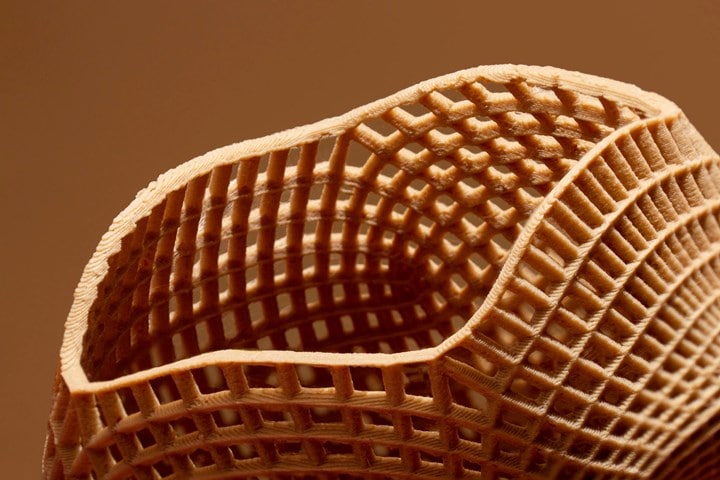Eco-Fil-A-Gehr consists of recycled wood fibers mixed with biodegradable biopolymers, giving printed objects natural look and feel with dimensional stability and high elastic properties.
Eco-Fil-A-Gehr, a novel wood-based 3D printing filament designed for high dimensional stability and optimal elastic properties, as well as compostable and recyclable capabilities, is introduced by GEHR, a global producer of thermoplastic semi-finished products.
GEHR has a diverse portfolio of 3D filaments in a variety of materials developed for a variety of customer needs. Because of its scientifically proven sustainability features, Sulapac’s 3D printing solution, a material from its Sulapac Flow family, is the most recent addition to GEHR’s eco-line.
Wood-based 3D Printing Filament
Eco-Fil-A-Gehr Sulapac wood (Helsinki, Finland) is made of recycled wood fibres mixed with biodegradable biopolymers. According to reports, the premium eco-filament gives the printed objects a natural look and feel as well as a haptic touch. It can be used to print both heavy, stable parts and light, highly detailed objects.
GEHR has a diverse portfolio of 3D filaments in a variety of materials developed for a variety of customer needs. Because of its scientifically proven sustainability features, Sulapac’s 3D printing solution, a material from its Sulapac Flow family, is the most recent addition to GEHR’s eco-line. According to BPI (ASTM D6400), the material used in the Eco-Fil-A-Gehr filament is industrially compostable, contains 72% USDA certified bio-based content, and leaves no permanent microplastic or toxic load behind. Furthermore, the material meets the requirements of the EU and the FDA for food contact materials.
According to GEHR, mechanical recyclability has been demonstrated by an independent third party — the material can be recycled up to six times. It has also been demonstrated that the material can be recycled back to monomers via hydrolysis, making it suitable as feedstock for recycled biopolymers.
Sulapac materials can also be collected and sorted from a mixed waste stream, according to field tests. Sulapac materials do not interfere with the current mechanical recycling of conventional fossil-based or bio-based non-biodegradable plastics when collected together. The technology for chemical recycling of bio-based and biodegradable materials exists, according to GEHR, but the infrastructure is still being developed.
Eco-Fil-A-Gehr is said to have a lovely, natural appearance as well as a pleasant, subtle odour from the natural wood it contains. For 3D printing and filament extrusion, the material has high dimensional stability and elastic properties.
The stability of the material is exceptional, and it works as well as or even better than other wood filaments or PLA.
– Joona Kontinen, Innovation manager, Sulapac
Typically, a width deviation of 0.05 mm is allowed when producing the filament. The deviation with Sulapac is less than a tenth of that, ensuring smooth production and consistent quality. “The Sulapac material used in the Eco-Fil-A-Gehr Wood has the perfect combination of properties for 3D printing with no compromises in sustainability,” Kontinen continues.
The first customers will most likely be cosmetic brands that are already familiar with Sulapac materials and are interested in prototyping with the material. Other common applications anticipated by GEHR include decorative components and point-of-sale displays. Eco-Fil-A-Gehr Wood is available for purchase by businesses and individuals through GEHR’s online store.
Subscribe to AM Chronicle Newsletter to stay connected: https://bit.ly/3fBZ1mP
Follow us on LinkedIn: https://bit.ly/3IjhrFq
Visit for more interesting content on additive manufacturing: https://amchronicle.com


